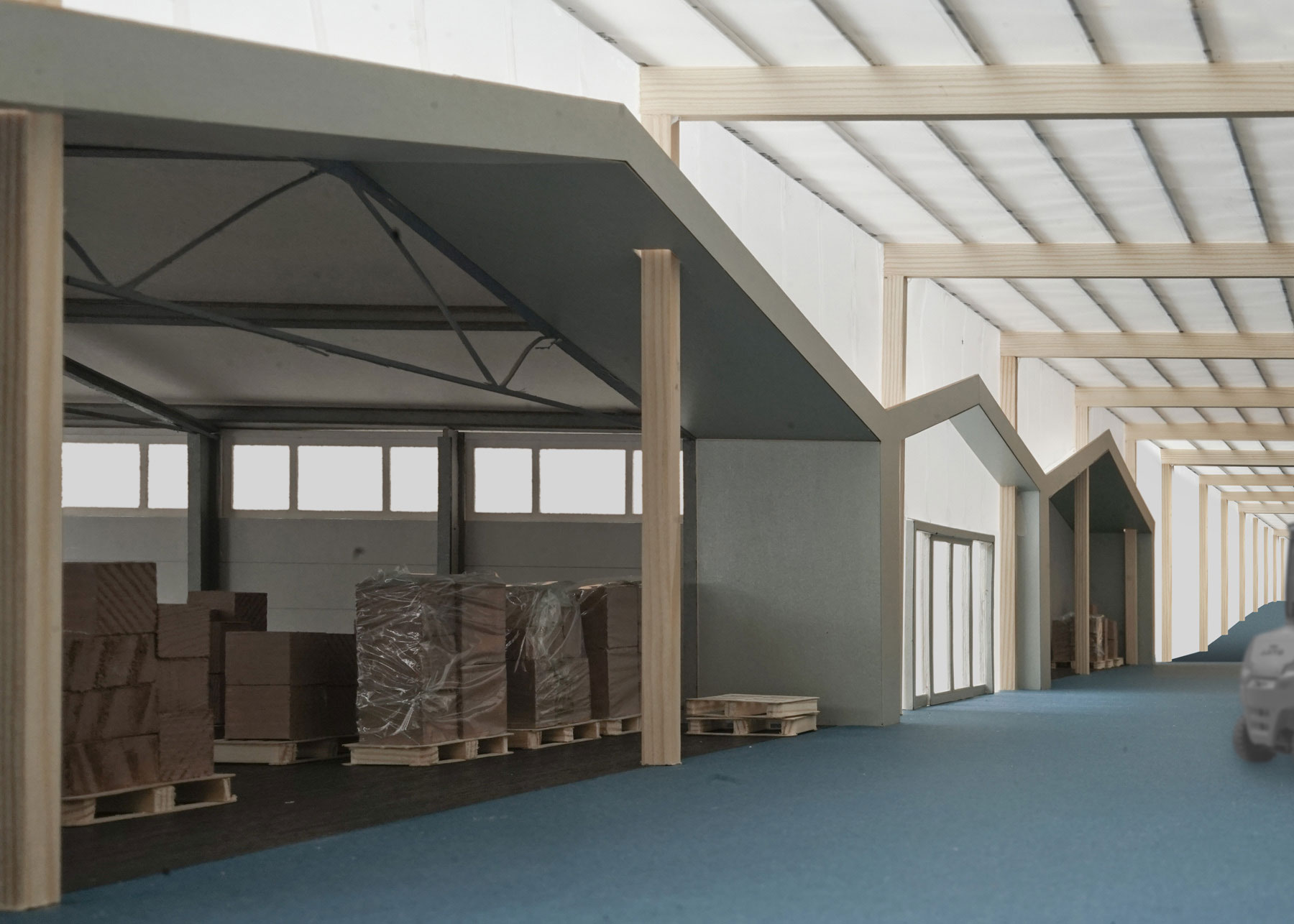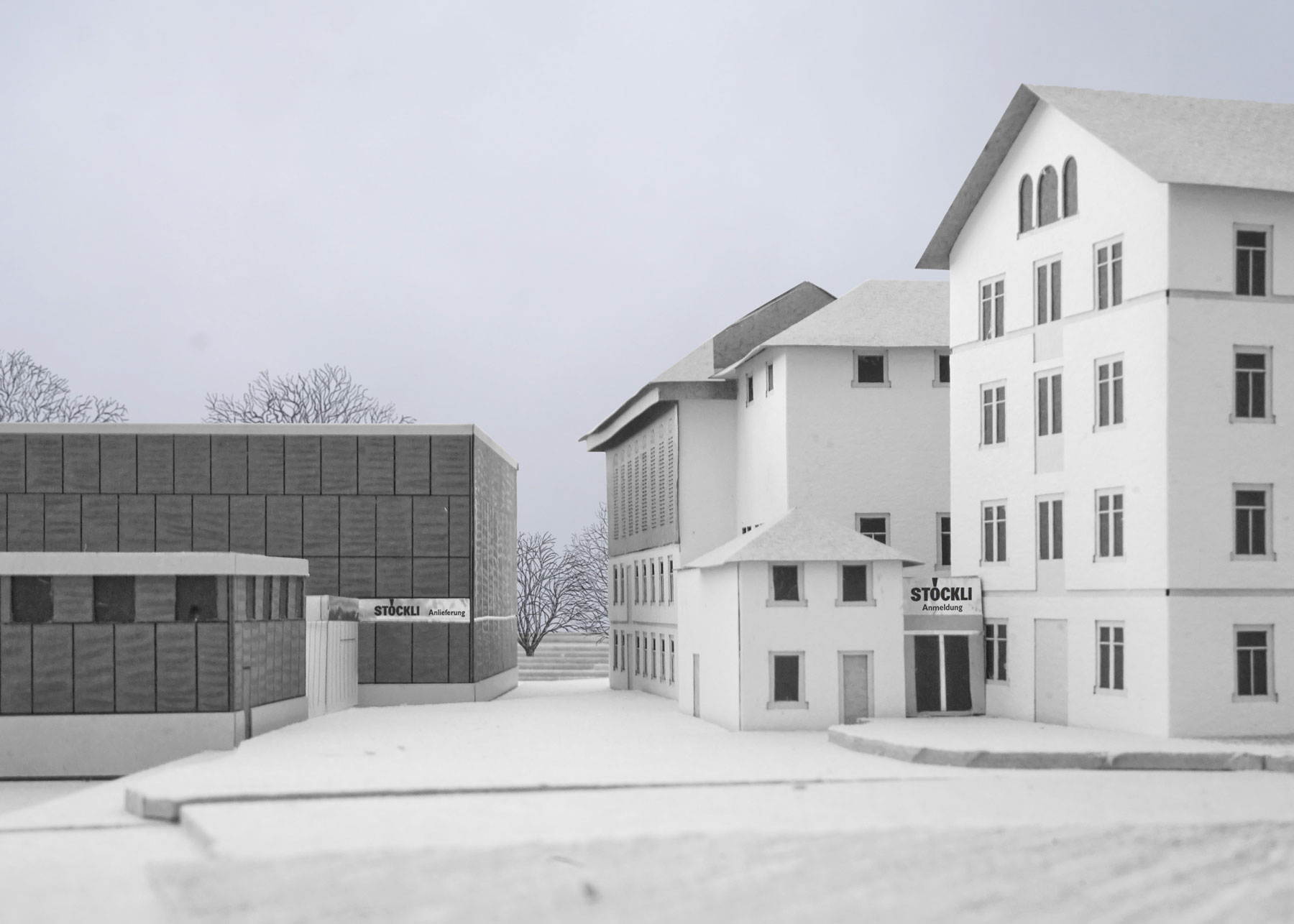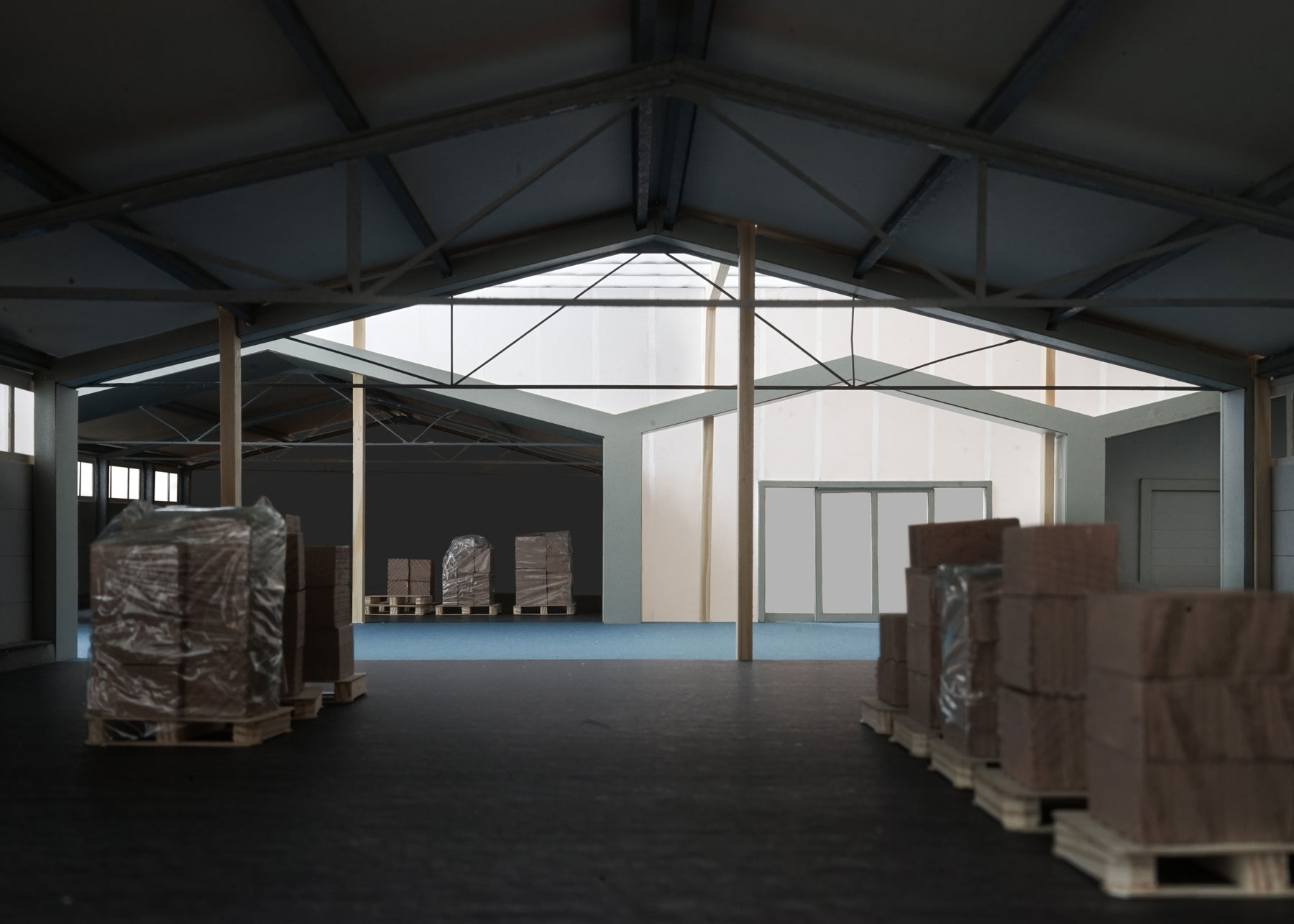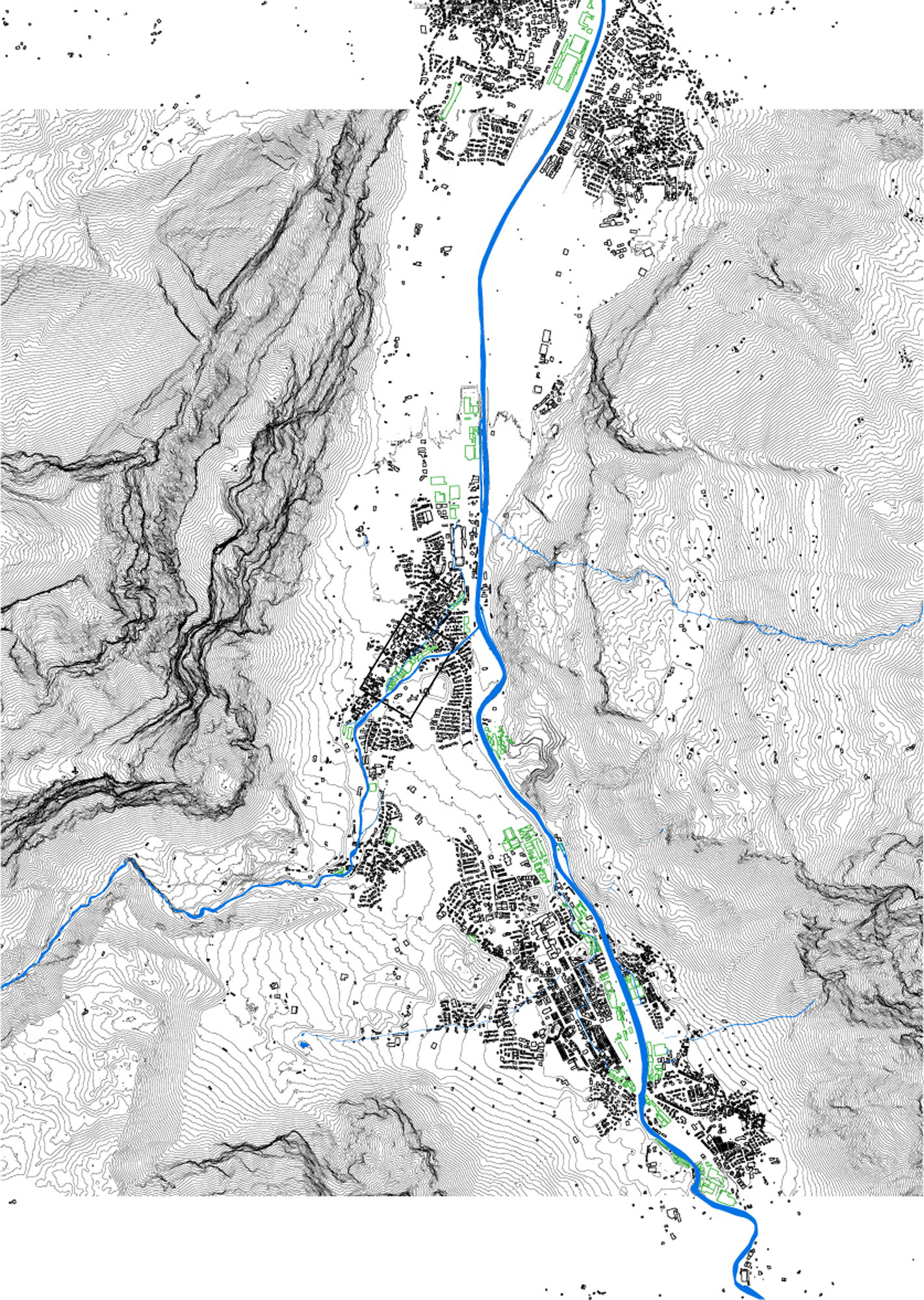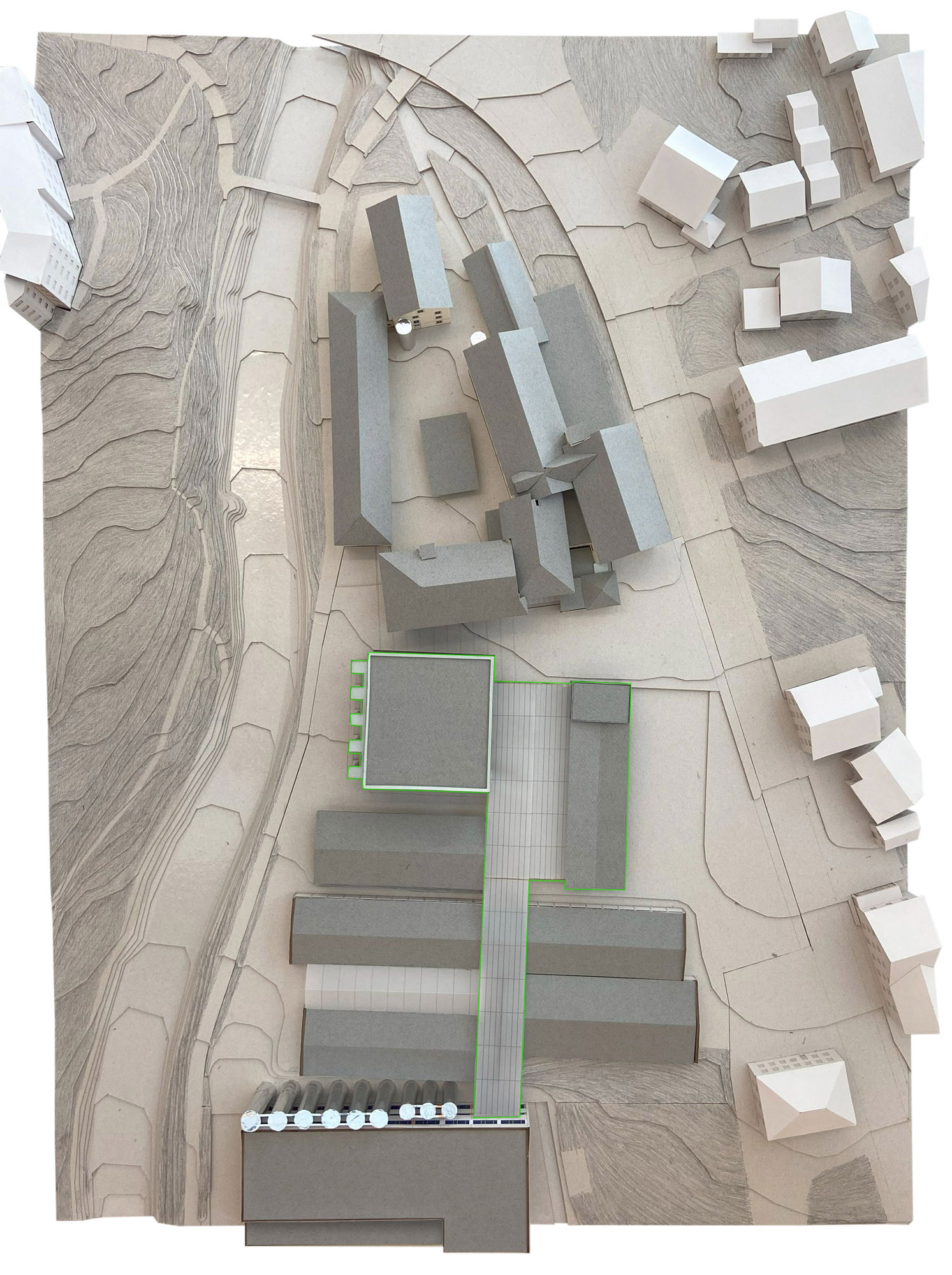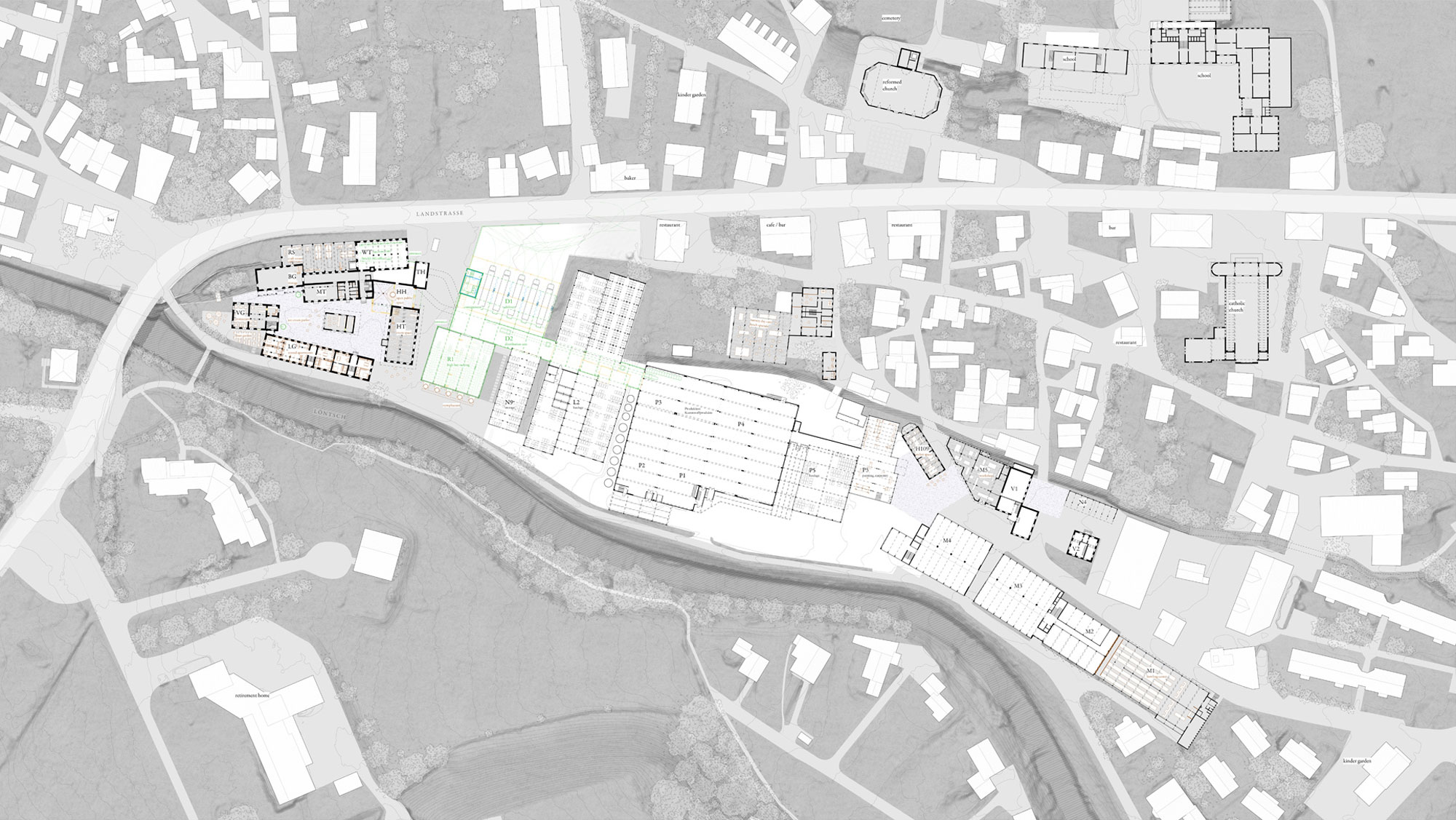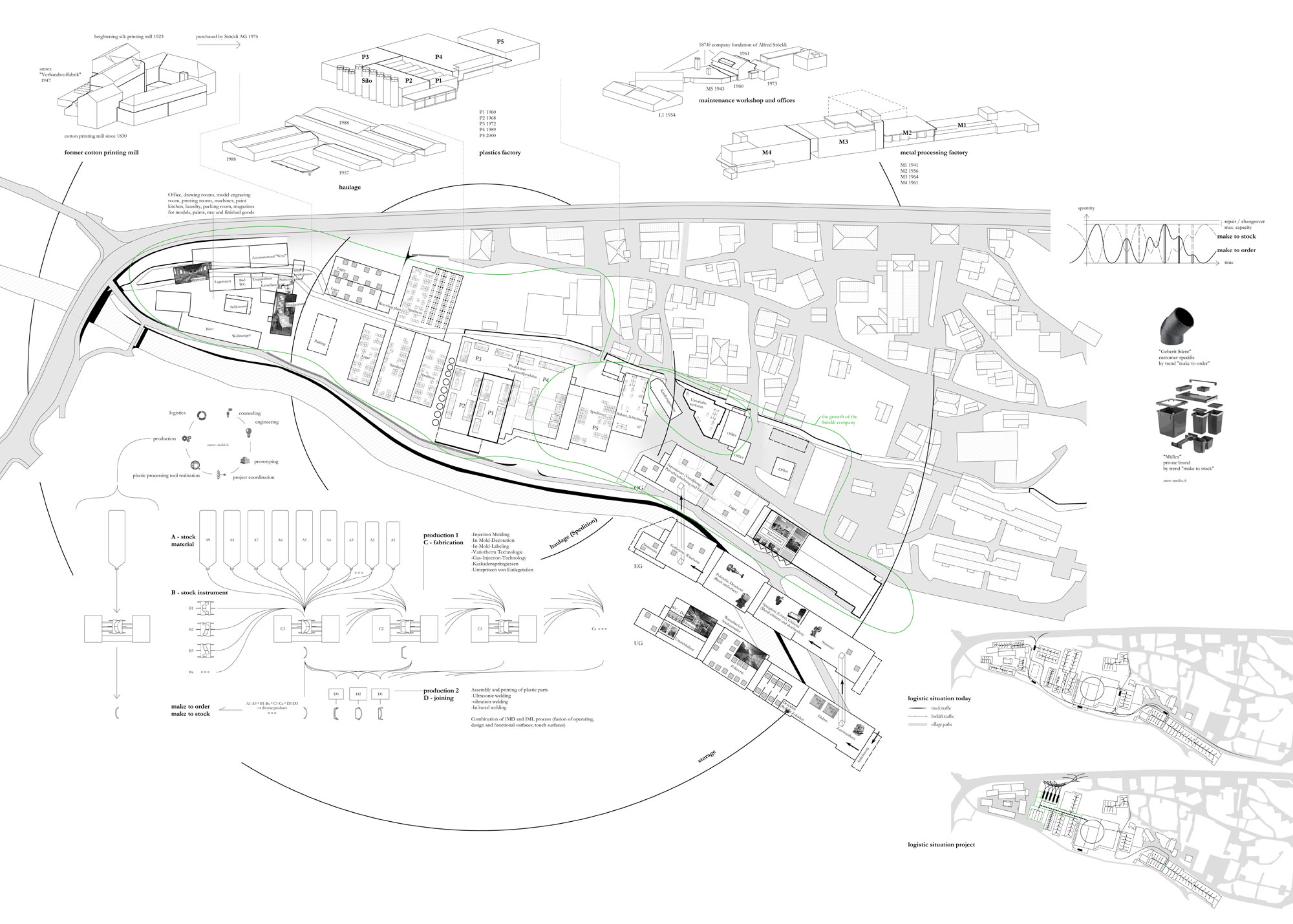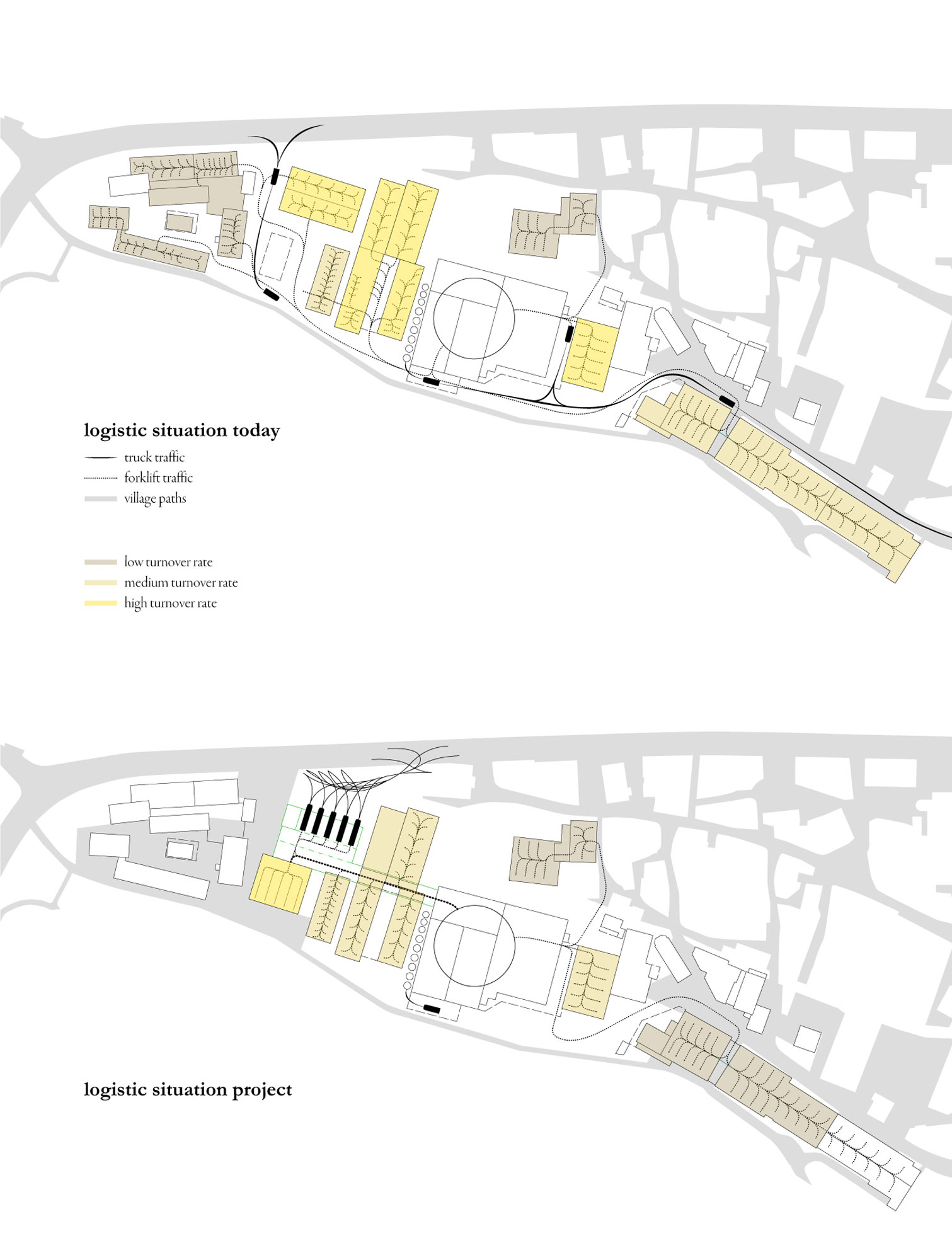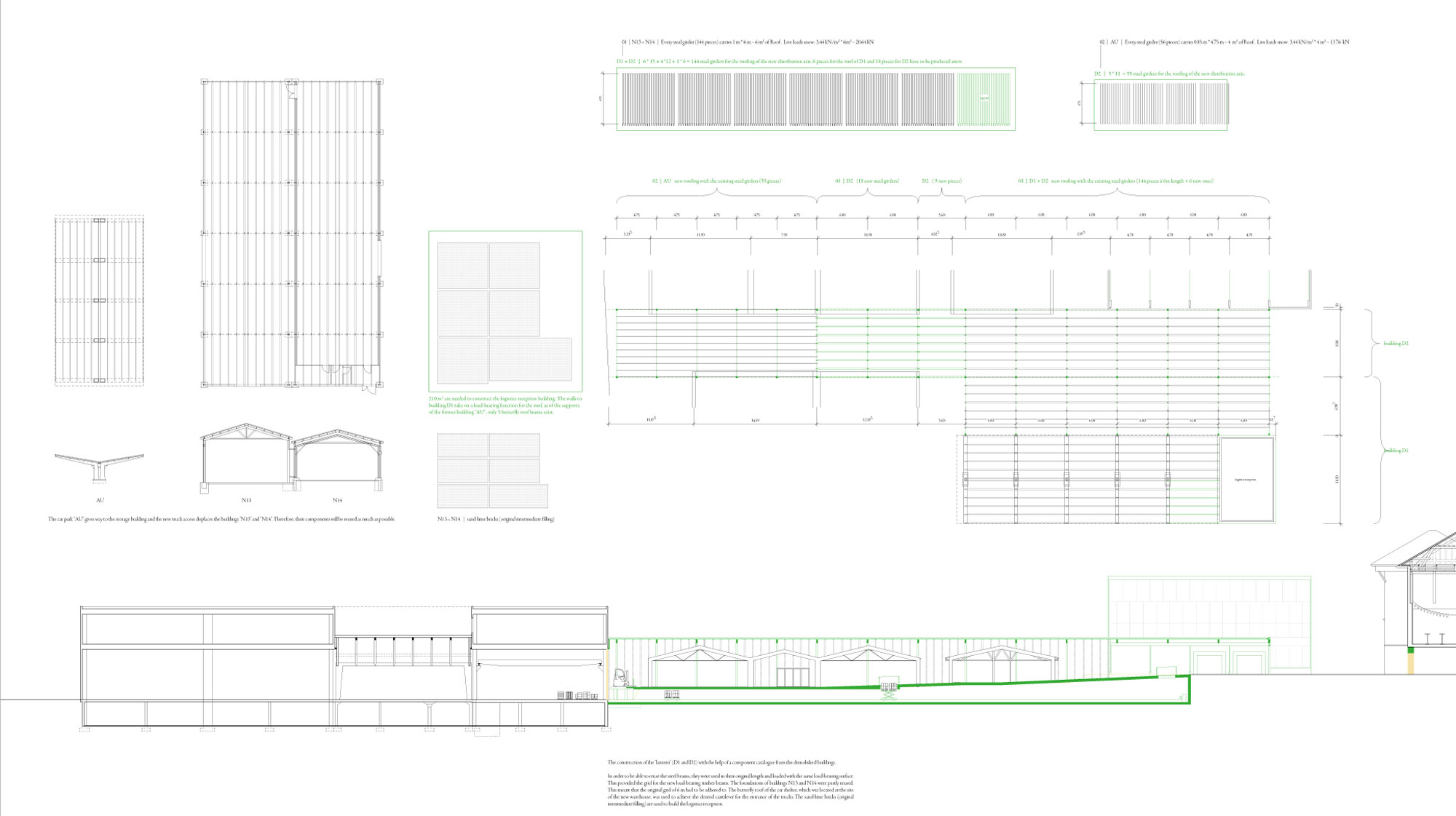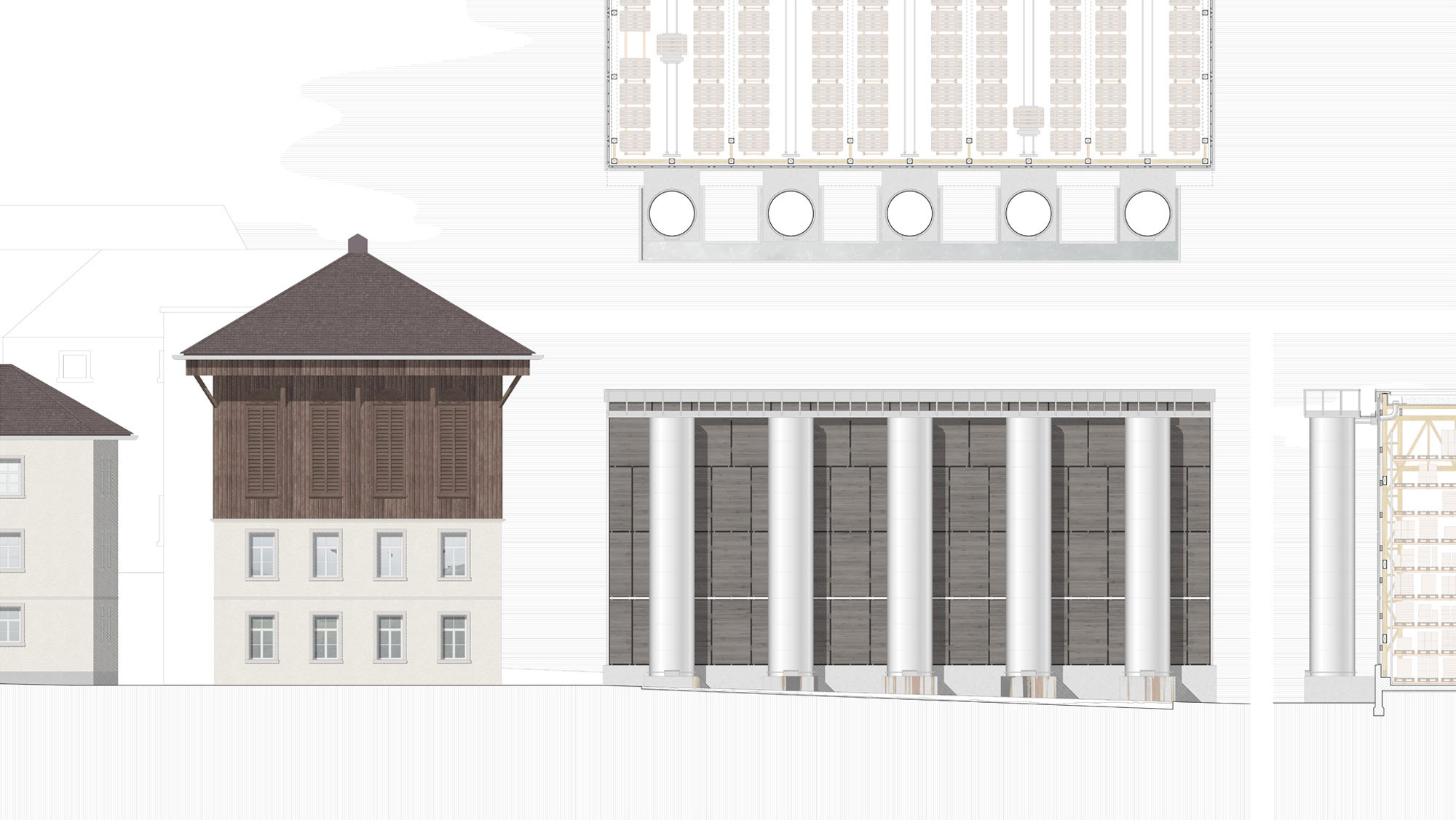The canton of glarus was strongly influenced by the industry of the cotton manufacture in the 19th century. The former cotton printing plant on the Löntsch in Netstal, Canton Glarus is representative of the industrial ensembles that were built at that time. Unfortunately, many of these have already been destroyed and this ensemble is also not sufficiently protected and is therefore threatened with demolition. The Stöckli AG company, founded around the same time 200m further downstream, has had consistent growth and is therefore strongly interwoven with the village today. However, its possible expansion is limited by the river, the cantonal road and an interwoven residential area. In 1976, the company Stöckli AG bought the old industrial ensemble with the idea of demolishing it if necessary and integrating the area into their production with a new building. In order to prevent this, the potential in preserving this ensemble has to be shown to the company on various levels. Their offices, reception as well as an exhibition space could be brought under one roof in the beautiful interiors of the old industrial ensemble and together with the remaining buildings of the ensemble, the inner courtyard could be made into a village centre for Netstal. This would clarify their corporate identity as a traditional, innovative family business that has grown together with the village to its current size. But before this scenario becomes credible, a new spatial organisation of the site must be sought. The old industrial building, or more precisely the location of the ensemble, must be freed from its function as a potential production space or storage area, as this would inevitably lead to demolition. This is where this diploma project comes in. With a punctual intervention that functions like a catalyst, a rethinking of the company's strategy and a new organisation of the site is initiated. By significantly improving the logistical situation of the heterogeneous Stöckli site (with a new, efficient high-bay warehouse and a new axis that connects production, warehousing and shipping), it opens up new thinking space for the sustainable development of Stöckli AG into a shared future with the village of Netstal.The canton of glarus was strongly influenced by the industry of the cotton manufacture in the 19th century. The former cotton printing plant on the Löntsch in Netstal, Canton Glarus is representative of the industrial ensembles that were built at that time. Unfortunately, many of these have already been destroyed and this ensemble is also not sufficiently protected and is therefore threatened with demolition. The Stöckli AG company, founded around the same time 200m further downstream, has had consistent growth and is therefore strongly interwoven with the village today. However, its possible expansion is limited by the river, the cantonal road and an interwoven residential area. In 1976, the company Stöckli AG bought the old industrial ensemble with the idea of demolishing it if necessary and integrating the area into their production with a new building. In order to prevent this, the potential in preserving this ensemble has to be shown to the company on various levels. Their offices, reception as well as an exhibition space could be brought under one roof in the beautiful interiors of the old industrial ensemble and together with the remaining buildings of the ensemble, the inner courtyard could be made into a village centre for Netstal. This would clarify their corporate identity as a traditional, innovative family business that has grown together with the village to its current size. But before this scenario becomes credible, a new spatial organisation of the site must be sought. The old industrial building, or more precisely the location of the ensemble, must be freed from its function as a potential production space or storage area, as this would inevitably lead to demolition. This is where this diploma project comes in. With a punctual intervention that functions like a catalyst, a rethinking of the company's strategy and a new organisation of the site is initiated. By significantly improving the logistical situation of the heterogeneous Stöckli site (with a new, efficient high-bay warehouse and a new axis that connects production, warehousing and shipping), it opens up new thinking space for the sustainable development of Stöckli AG into a shared future with the village of Netstal.
